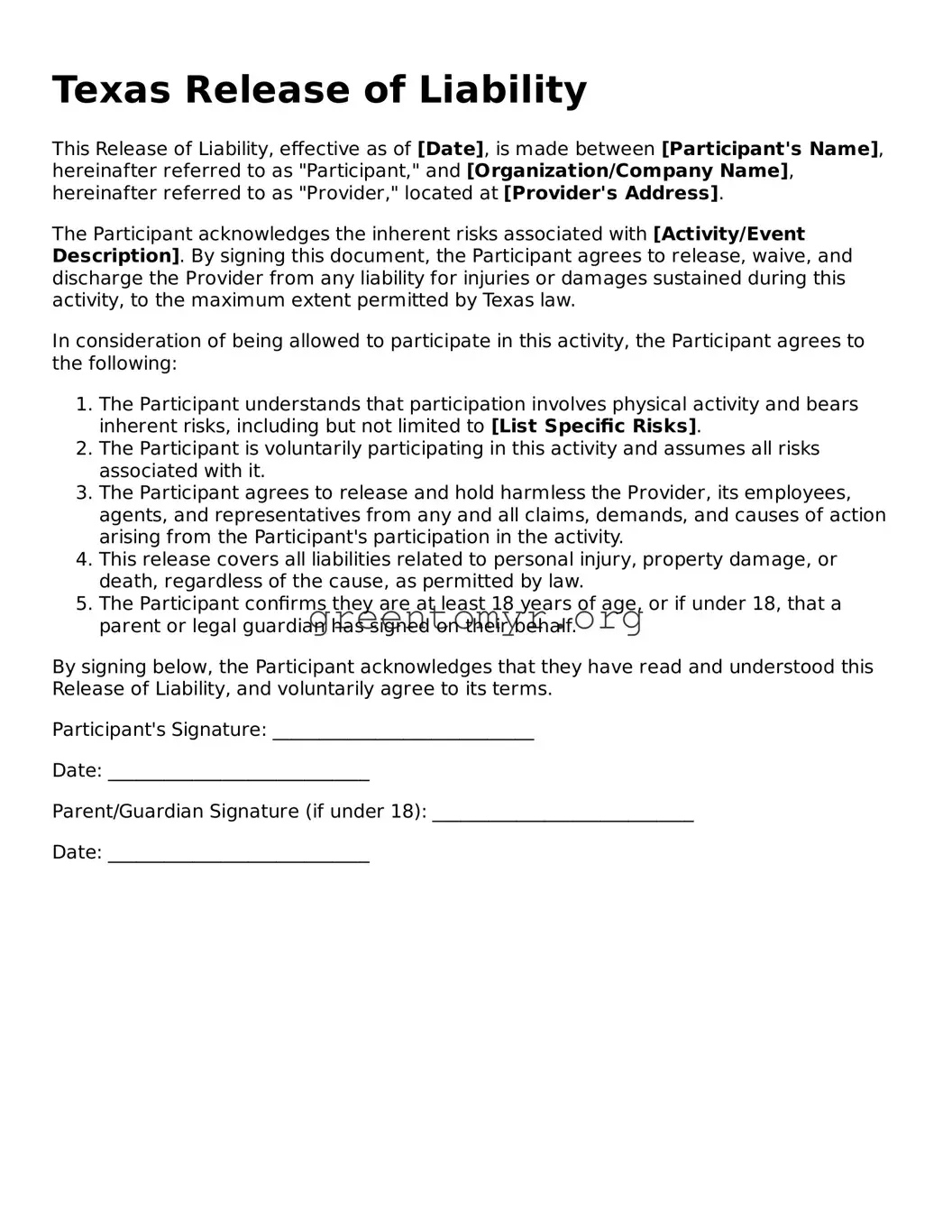Texas Release of Liability
This Release of Liability, effective as of [Date], is made between [Participant's Name], hereinafter referred to as "Participant," and [Organization/Company Name], hereinafter referred to as "Provider," located at [Provider's Address].
The Participant acknowledges the inherent risks associated with [Activity/Event Description]. By signing this document, the Participant agrees to release, waive, and discharge the Provider from any liability for injuries or damages sustained during this activity, to the maximum extent permitted by Texas law.
In consideration of being allowed to participate in this activity, the Participant agrees to the following:
- The Participant understands that participation involves physical activity and bears inherent risks, including but not limited to [List Specific Risks].
- The Participant is voluntarily participating in this activity and assumes all risks associated with it.
- The Participant agrees to release and hold harmless the Provider, its employees, agents, and representatives from any and all claims, demands, and causes of action arising from the Participant's participation in the activity.
- This release covers all liabilities related to personal injury, property damage, or death, regardless of the cause, as permitted by law.
- The Participant confirms they are at least 18 years of age, or if under 18, that a parent or legal guardian has signed on their behalf.
By signing below, the Participant acknowledges that they have read and understood this Release of Liability, and voluntarily agree to its terms.
Participant's Signature: ____________________________
Date: ____________________________
Parent/Guardian Signature (if under 18): ____________________________
Date: ____________________________
